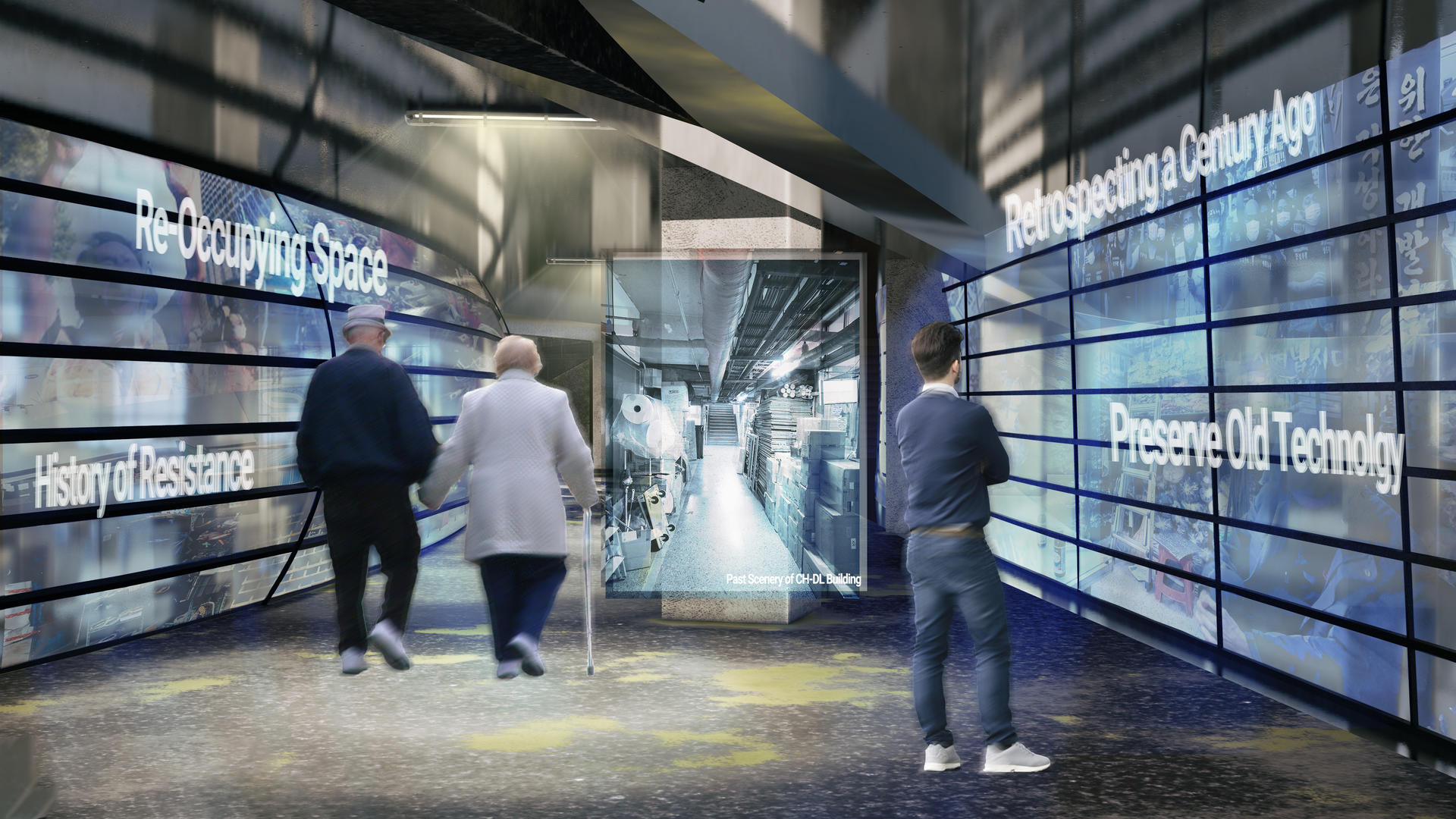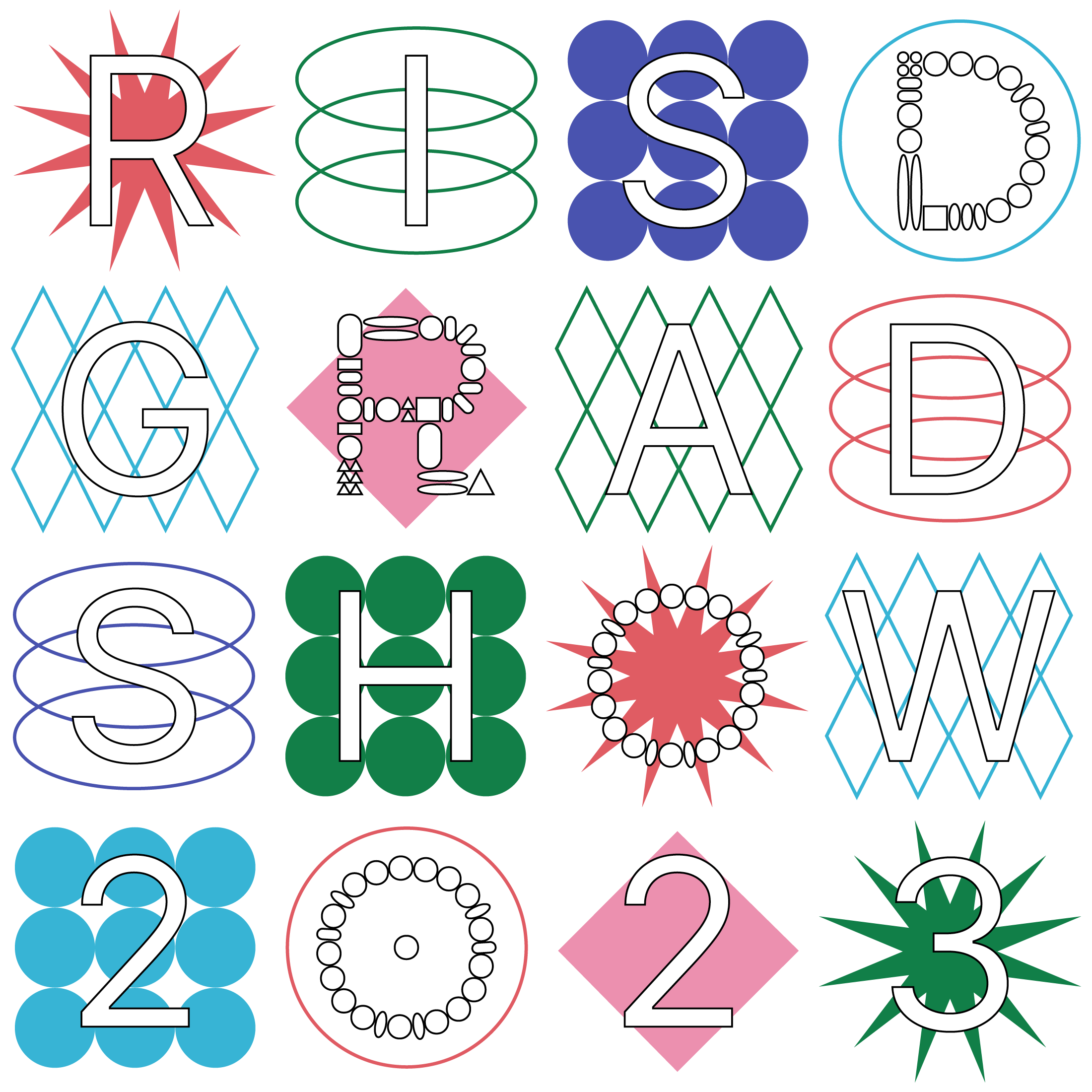Yookyung Lee
Futuristic Scenario in Seun
Due to social distancing policies during the coronavirus pandemic, people have increasingly turned to digital platforms to fulfill what they previously enjoyed in face-to-face interactions. The high demand for virtual world services, called “metaverses,” has sparked discussions about the possibility of completely replacing the real world, which has raised questions about the role of architects in dealing with physical spaces. However, it is widely believed that digital elements will merge into the real world instead of completely replacing it, which makes augmented reality (AR) a key technology to study in the context of architecture.
In “Learning from Las Vegas,” Robert Venturi argues that designers should consider architecture as a medium for communication in the information age. To support this idea, he mentions commercial signage as an element of vernacular architecture that heralds what kind of experience a particular location offers.
However, augmented spaces in various forms are not adequately serving people and communities. They are just filling the interests of contemporary capitalism, concerned with profits for the companies that create the metaverse, not the people who inhabit it. Designers need to explore how architecture that actively uses augmentation can create better spaces, healthy cities, and democratic environments.
This project proposes a speculative design for the Cheonggye/Daelim shopping center, one of the Seun Shopping Malls in Seoul, South Korea, imagining a future world where AR has become mainstream, not confined to small screens. While the media technology people use rapidly evolves, redevelopment and gentrification will still threaten the project site and its surrounding areas. Intertwined with various political and economic interests, even total demolition of the site and residential eviction may occur in the long term.
Given the bleak prospect of investors that would profit from the redevelopment of this site, the following thesis explores how this technological revolution in media, augmented reality, can be utilized to build an inclusive place for the individuals who work in this community. By considering how we communicate influences architectural design, this speculative design will include components of AR technology to enhance visual and interactive spaces in the development of the Seun Shopping Malls.
Image
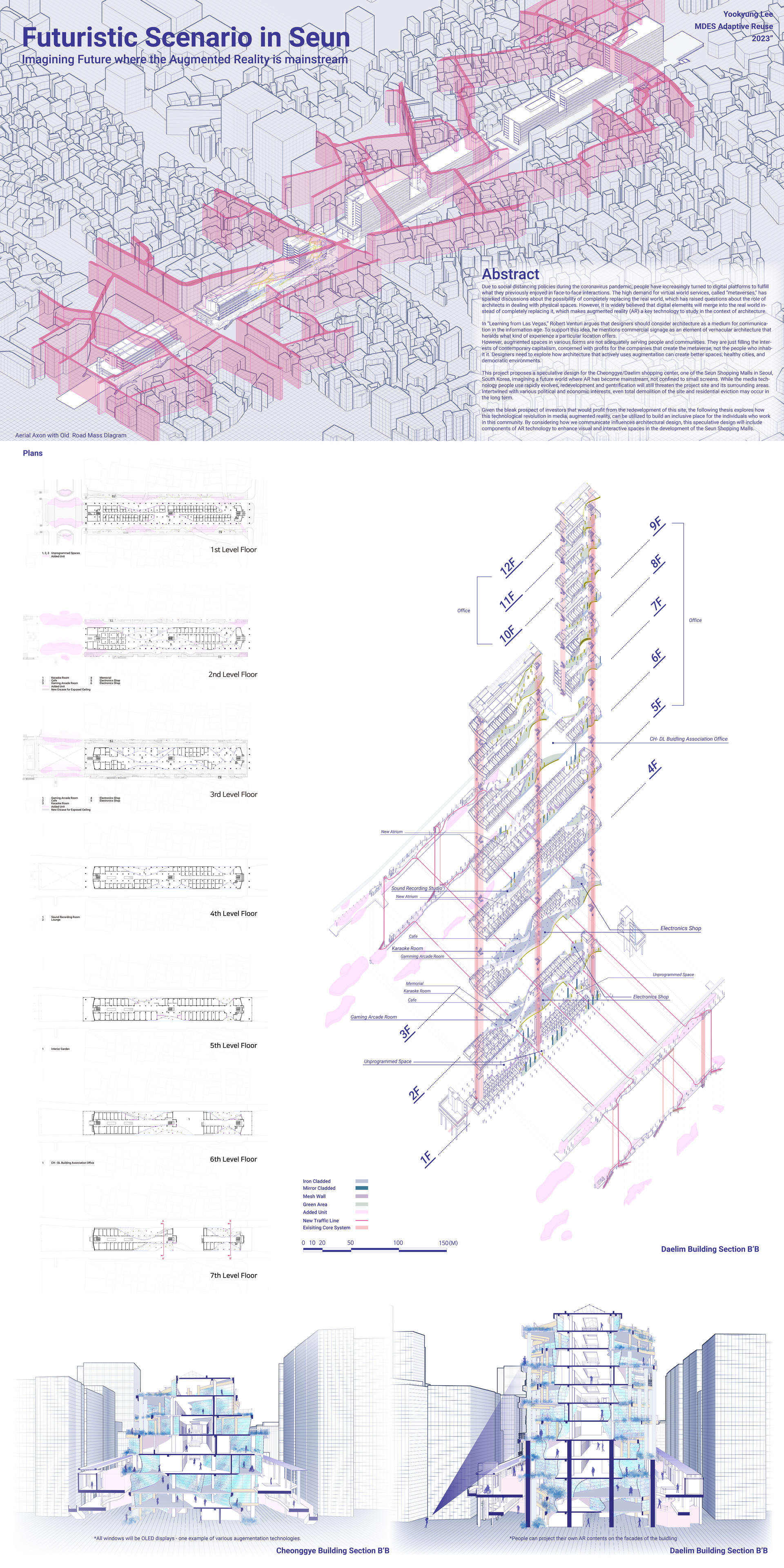
Image
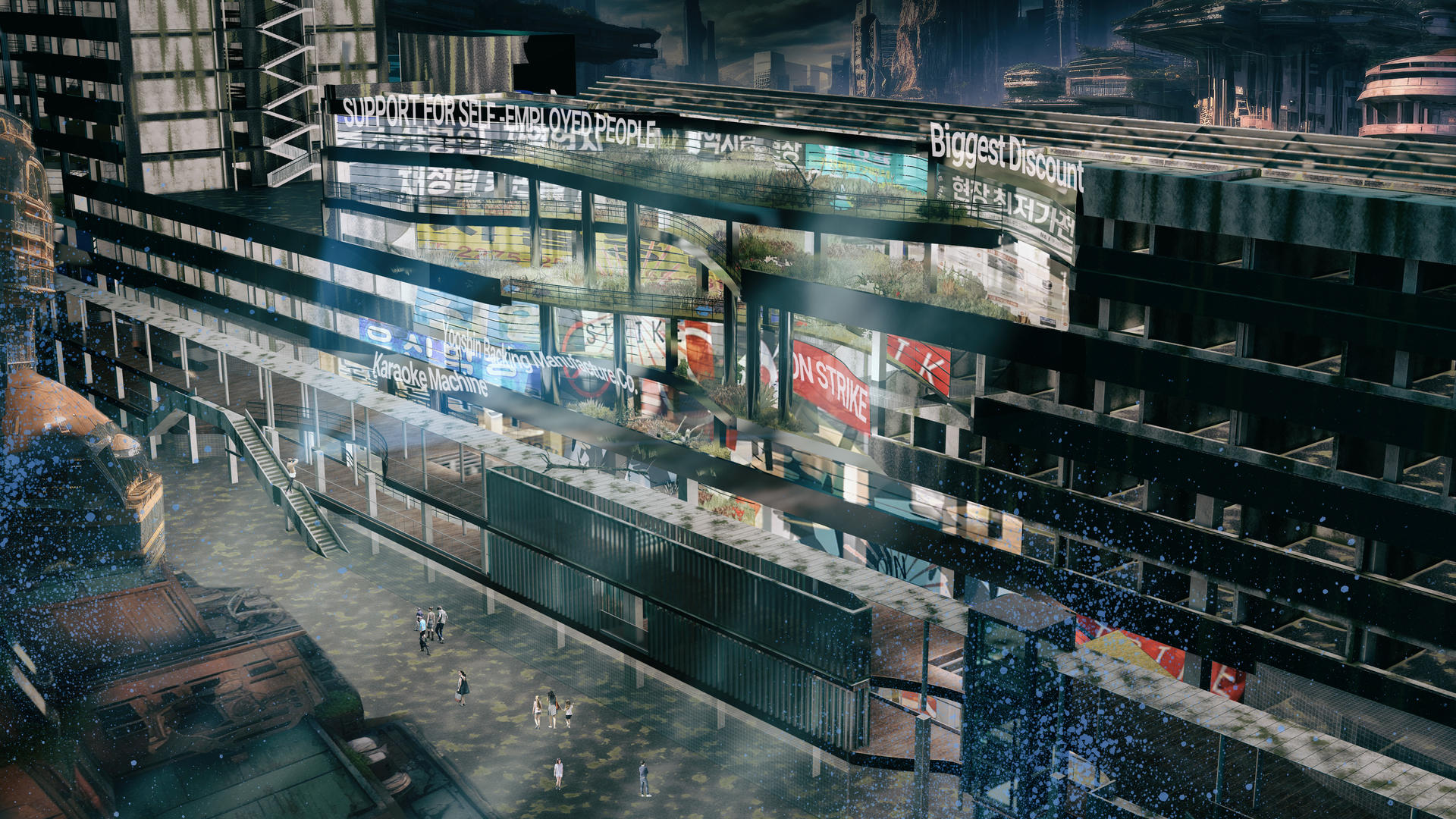
Image
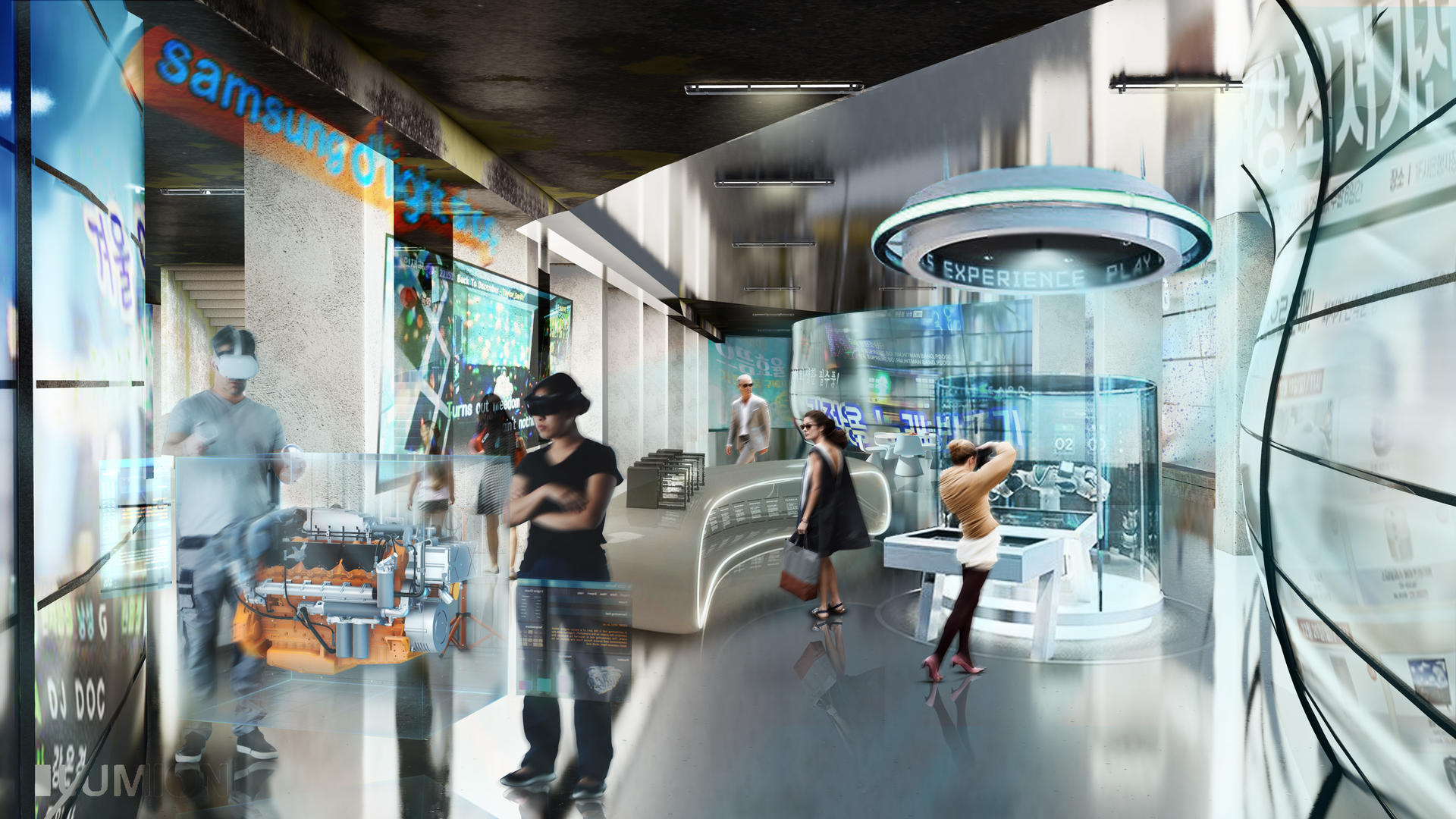
Image
